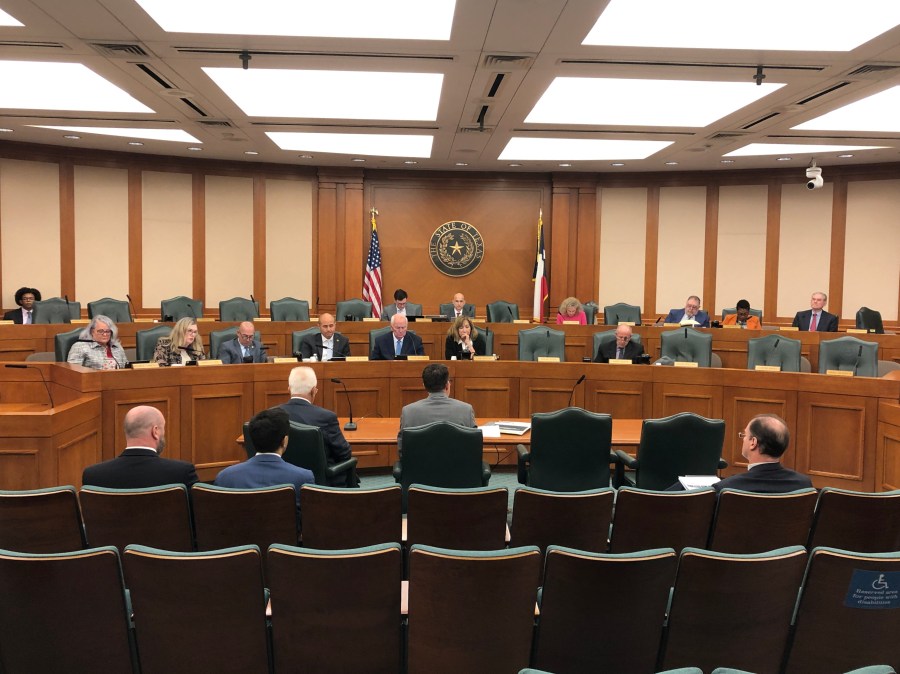AUSTIN (KXAN) – Lawmakers announced reforms to the Office of Attorney General’s Crime Victims’ Compensation program and new performance measurements that would give lawmakers a more accurate picture of how fast — or slow — victims receive assistance, according to testimony at a House Appropriations Committee hearing Tuesday.
State officials are crafting the changes after multiple KXAN investigations into the CVC program. KXAN was the first to expose how skewed measurements of victim payments were submitted to lawmakers and, for years, made it appear victims were being paid far faster than reality.
“We need to get to some actual performance measures that mean something,” Deputy Attorney General Josh Reno told representatives at the hearing.
The warped performance measurements have been caused by a formula that averages victim claims – which were recently taking nearly eight months on average – with sexual assault examination claims that are paid directly to health care providers in a few days.
By averaging the two different payments together, the measurement made it appear victims were being awarded claims in less than 60 days in April. Meanwhile, in the same timeframe, internal records showed victims were actually waiting an average of 230 days for a first payment in that timeframe, according to data obtained by KXAN through the Texas Public Information Act.
The Appropriations Committee was tasked with reviewing the CVC program’s operation ahead of the 2025 legislative session. The CVC program reimburses victims and close family members for crime-related expenses like hospital bills, therapy, lost wages, funerals and more.
Rep. Donna Howard, D-Austin, said the state will set two new and separate benchmarks: 90 days for awarding a victim claim and seven days for a sexual assault claim.
Lane Brown, the CVC’s new division chief since May, acknowledged mixing data made it inaccurate.
The skewed measurements “make it really hard to do what I’m here to do, which is look for opportunities for improvement,” Brown said at the hearing. “If those (numbers) are all jumbled into the same bucket then it is hard to see where the actual truth lies.”
The two types of payments will be separated so lawmakers can get a clear picture of how long it takes for victims to get a first payment. That change is expected to be included in the General Appropriations Act, and will go into effect next September, if approved by the Legislature.
Rep. Mary Gonzalez, D-Clint, vice chair of the Appropriations Committee, told KXAN in 2023 the performance measurements are supposed to help lawmakers make funding decisions.
“This data is critical,” she previously said. “This is exactly the type of information we use to decide how much money gets appropriated; how much staff is needed.”
Victims in need
KXAN has interviewed numerous victims over the past two years who have complained of extended wait times and obstacles to getting payments.
Terry Reager, a victim of a January 2022 parking lot robbery in Austin, waited more than six months for assistance from CVC. She struggled with the program’s website and application process.
“What they are putting me through is very traumatic, and there’s never any closure to it,” Reager told KXAN over the summer. “There’s never a feeling that somebody is advocating for me and moving forward with this.”
Steven Heller, a victim of an attempted hit and run on New Year’s Day of 2023 in Pflugerville, told KXAN he waited over half a year to get approved for help with medical bills. Heller was riding his bicycle when he was sideswiped by a convicted felon fleeing police in a stolen car.
Improvements in the works
Reno and Brown told lawmakers the program has been making headway on a backlog of claims, and they expect wait times for victims to improve.
The department is now nearly fully staffed, after losing dozens of employees — including senior staff — during and after the COVID lockdowns. The CVC officials said they are also retaining staff with higher wages, a new building location downtown and revamped job titles.
“This is a group of people that care about what they do,” Reno said about his CVC employees. “We know this program is not without its faults.”
The CVC program’s impact is vast. In fiscal year 2023, victims filed nearly 42,000 applications and received more than $58.7 million to aid crime victims, according to an annual report.
That $58 million in disbursements was $17.6 million less than forecast, due to “persistent staffing shortages and loss of key management,” according to CVC reports submitted to the Budget Board.
